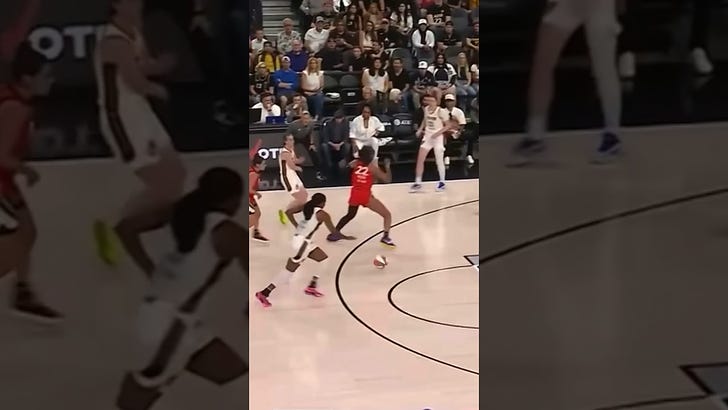I’m a big Caitlin Clark fan. Yes, I started watching the WNBA because of Clark. Sue me. Here’s her running the pick and roll with Aliyah Boston:
I could watch the two of them all day. Clark runs the pick and roll maybe better than anyone else in the world.
But she isn’t perfect. If you watch her play full games you’ll see missed opportunities. Moments when she doesn’t anticipate and move to create a passing lane, or passes into a help defender, or gets blitzed with a double team and gets hung up.
Running the pick and roll in basketball isn’t a skill that you learn and then check off your list. You can bet Clark and Boston will work on their pick and roll this offseason. They’ll work on their timing, their chemistry, their footwork. They’ll be a little better next year. Even more highlights, fewer missed chances, more early help coming and open looks for their teammates.
A lot of the learning I’ve done as a teacher like the pick and roll. The most important parts of teaching aren’t things I learn, then check off my list and never revisit. They’re skills that I gradually refine and get better at over time. The learning is often slow and it’s never finished. Here are a few of the ideas I find myself revisiting and learning from over and over again:
Memory is the residue of thought.1 We learn what we think about. I want my students to be thinking about the big ideas of what we’re learning. Human minds aren’t designed to think, we’re designed to find shortcuts and easy ways out. My job is to design a lesson so that students think about what I want them to learn.
Knowledge is sticky. The most important factor in whether a student learns something is what they already know.2 I want the stuff students are going to learn to connect to stuff they already know. That means making sure they have the skills to learn a concept, and finding ways to connect math to their intuitions and experiences in the world.
The best way to remember something is to practice retrieving it. Humans forget things we don’t use. The best way to stem the tide of forgetting is retrieval, which means pulling the idea out of memory. Retrieval works best when spaced over time and interleaved with other skills.
Transfer is hard, and the best way to help students transfer what they know is to use it in as many different contexts as possible. Human minds get stuck in the concrete. We struggle to apply ideas in new contexts, beyond the contexts that we learned them in. The answer is simple but takes a lot of time: apply the learning in lots of different places, and think about how all those contexts connect to the underlying math.
A consultant working with my school said something last week about the “old way” of teaching math vs the “new way.” That’s silly. There wasn’t some meeting of all the math teachers where everyone decided to change from the old bad way to the new good way. Whatever you think the old way is, lots of teachers are still doing it. Whatever you think the new way is, some teachers have been using that for a long time.
That way of talking about teaching is something I hear a lot. Everyone wants to be innovative, everyone wants to be doing something new. And sure, new ideas are good sometimes. But innovation is seductive. I improve most as a teacher when I go back to ideas I’ve known for years, refine them, and find a new subtlety or a new twist. Right now I’m digging into those four ideas I described above. It’s nothing new but I have a lot to learn.
This idea is from Dan Willingham’s book Why Don’t Students Like School?
Adapted from David Ausubel



Love the analogy.
Okay, what about when kids "Defend" the teacher pnr? Block or sabotage learning.
What are the top 3 ways? What is the math class equivalent of
1. "Switch"
2. Go under the pick
3. Hedge
#2 might be kid "tries to nominally complete problems, but avoid Willingham style thinking." If I go under the pick, I can't get blamed (for allowing easy drive to the basket). Similarly, if I nominally go through the motions of completing problems, I can't get blamed for not trying at all. But I get to avoid the painful physical moment of trying to contort my body over the pick setter.